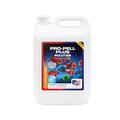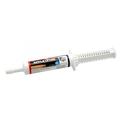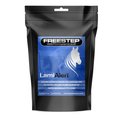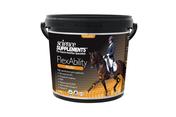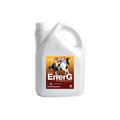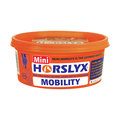Weight is something that can both indicate, and impact, the health of your horse, whether they’re carrying excess pounds they need to shed, or are underweight.
While we often think of obesity as being particularly unhealthy, weighing too little can also have major health implications if not managed, or may even be the first sign of an existing problem.
Body Condition
Body condition scoring your horse will help confirm if they’re underweight, if this is something you suspect. Start by having a feel of your horse, starting at the neck and working along the body. Each area needs to be scored individually from 1-9 (1 being emaciated, and 9 being extremely fat). Ideally you are aiming for a score of 5 (moderate) for each area.
Below are details of each score from 1-9 to help identify an underweight horse:
- Poor or emaciated – the horse’s spine, ribs, tail head, shoulders and hips are prominent, with no fat covering anywhere.
- Very thin – there is a slight covering of flesh/fat over the shoulders, spine and tail head, but the ribs remain prominent.
- Thin – slight fat coverage over the hips and ribs but the top line is underdeveloped and angular.
- Moderately thin – the outline of the ribs is discernible, although covered. There is some top line on the neck and it is reasonably well covered. The hips and scapula are covered.
- Moderate – ribs can be felt, but aren’t visibly discernible. Top line is well muscled, there is no hollowness through the quarters, and there is a spongy covering of flesh/fat around the tail head.
- Moderately fat - the fat over the ribs and at the tail end feels spongy. Fat deposits may be noticed down the withers and behind the shoulders.
- Fleshy - there is an obvious crease down the back and it is difficult to feel the ribs.
- Fat - fatty pads can be felt around the tail end, and over the shoulders and ribs. The quarters may be apple-shaped and the area along the withers is filled with fat.
- Extremely fat - as well as every already specified, there is fat along the inner buttocks and the flank is flush with the quarters and middle.
If you find your horse is underweight, without any apparent cause then the first thing to do is consult your vet for advice. Your vet may need to run tests to see if there is an underlying reason for the weight loss, or inability to gain weight.
Unexplained Weight Loss
Some possible causes of unexplained weight loss are parasite burden (worms), poor dentition affecting your horse’s ability to eat, and digestive complaints like ulcers which can cause reduced appetite and a reluctance to eat. Chronic pain is often an overlooked cause of weight loss so, again, something worth investigating.
Once you have ruled out any health problems you should look to your horse's diet, where all the building blocks for building muscle or gaining weight come from. You can get personalised free feeding advice for your horse by calling a reputable horse feeds helpline or you can pay for advice from an independant equine nutritionist. The nutritionist will ensure that you are feeding the correct amounts, advise on the type of food that is best suited for weight or muscle gain and advise on any suitable supplements.
Weight Gain Supplements
Supplements which are good for weight gain include those which provide good quality protein in the form of amino acids, which are the building blocks of muscle (like Equitop Myoplast or NAF M Power ) or those which provide extra calories without extra excitability often in the form of fats and oils (like Equimins Linseed Oil or Lincoln Soya Oil).
Bear in mind that if your horse needs to build muscle this will not happen with diet alone; an appropriate exercise plan is also required, so seek advice from your instructor or trainer.
If you need any advice on managing an underweight horse, feel free to get in touch by commenting below or emailing directly: [email protected].
Written by: Hannah



